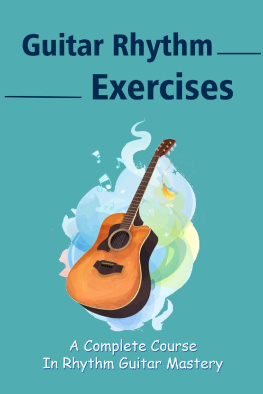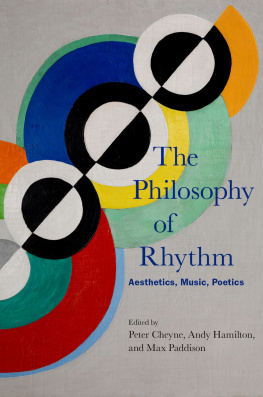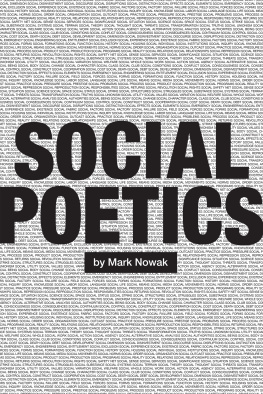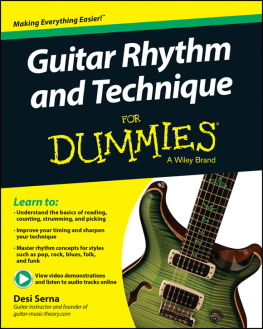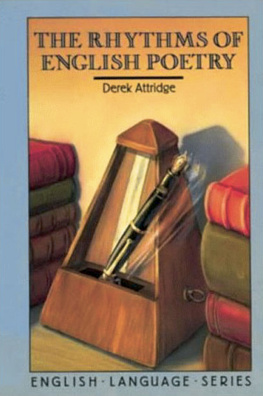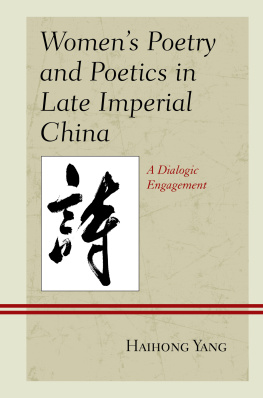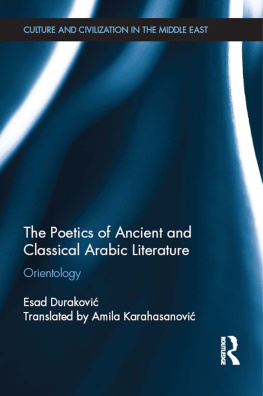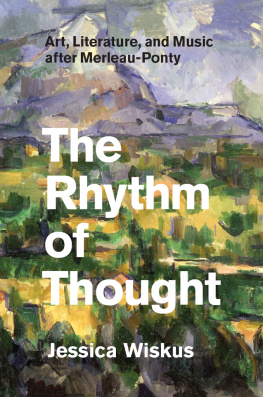CRITICAL RHYTHM
VERBAL ARTS: STUDIES IN POETICS
Lazar Fleishman and Haun Saussy, series editors
CRITICAL RHYTHM
The Poetics of a Literary Life Form
BEN GLASER AND JONATHAN CULLER, EDITORS
Fordham University Press
NEW YORK 2019
Copyright 2019 Fordham University Press
All rights reserved. No part of this publication may be reproduced, stored in a retrieval system, or transmitted in any form or by any meanselectronic, mechanical, photocopy, recording, or any otherexcept for brief quotations in printed reviews, without the prior permission of the publisher.
Fordham University Press has no responsibility for the persistence or accuracy of URLs for external or third-party Internet websites referred to in this publication and does not guarantee that any content on such websites is, or will remain, accurate or appropriate.
Fordham University Press also publishes its books in a variety of electronic formats. Some content that appears in print may not be available in electronic books.
Visit us online at www.fordhampress.com.
Library of Congress Cataloging-in-Publication Data
Names: Glaser, Ben, editor. | Culler, Jonathan D., editor.
Title: Critical rhythm : the poetics of a literary life form / Ben Glaser and Jonathan Culler, editors.
Description: New York : Fordham University Press, 2019. | Series: Verbal arts: studies in poetics | Includes bibliographical references and index.
Identifiers: LCCN 2018028222| ISBN 9780823282043 (cloth : alk. paper) | ISBN 9780823282036 (pbk. : alk. paper)
Subjects: LCSH: Rhythm in literature. | PoeticsHistory19th century. | PoeticsHistory20th century.
Classification: LCC PN1059.R53 C75 2019 | DDC 808.1dc23 LC record available at https://lccn.loc.gov/2018028222
Printed in the United States of America
21 20 19 5 4 3 2 1
First edition
CONTENTS
Ben Glaser
Jonathan Culler
David Nowell Smith
Simon Jarvis
Virginia Jackson
Haun Saussy
Erin Kappeler
Derek Attridge
Thomas Cable
Meredith Martin
Natalie Gerber
Yopie Prins
Ewan Jones
CRITICAL RHYTHM
Ben Glaser
Winter, writes W. H. Auden, is a time for the trying-out / Of new meters and new recipes, proper time/ To reflect on events noted in warmer months. Those months follow a natural and unconscious rhythm:
Spring-time, summer and fall: days to behold a world
Antecedent to our knowing, where flowers think
Theirs concretely in scent-colors and beasts, the same
Age all over, pursue dumb horizontal lives
On one level of conduct and so cannot be
Secretary to mans plot to become divine.
Lodged in all is a set metronome: thus, in May
Bird-babes still in the egg click to each other Hatch!
(18)
This metronomic clicking echoes the term famously chosen by Ezra Pound to forbid what he took to be the unnatural thud of overly metrical iambic rhythm: As regarding rhythm: to compose in the sequence of the musical phrase, not in sequence of a metronome. This import is out of joint not just with Englishs more-or-less native iambics but with the usual stories about how meters abstracted pattern emerges from the welter of linguistic (and other) rhythm as natural artifice, as a sensitive abstraction from the feel of an accentual tongue. To reflect in such a meter is not to seamlessly or properly engage the native or collective rhythms of a linguistic and cultural heritage. It is to encounter rhythm (through meter) as a defamiliarized and defamiliarizing force.
In an earlier and more sanguine moment, however, when Auden is editing an anthology to convince a suburban, commuting British public that they already like poetry and should do more of what they like, he depends upon a very broad sense of rhythm as both a social and aesthetic form:
All speech has rhythm, which is the result of the combination of the alternating periods of effort and rest necessary to all living things, and the laying of emphasis on what we consider important; and in all poetry there is a tension between the rhythm due to the poets personal values, and those due to the experiences of generations crystallised into habits of language such as the English tendency to alternate weak and accented syllables, and conventional verse forms like the hexameter, the heroic pentameter...
Here rhythm means linguistic rhythm, physical or physiological rhythm, the idiolect or subjective stressing of the poets personal values, and finally something closer to meter. I quote this in part to show the messiness and power of rhythm as it is called up by criticism. The passage manifests rhythms scalar power in the critical imagination and its tendency to paradoxically transcend the boundaries of the literary (or the poetic or lyric) in order to establish new aesthetic domains. That rhythm cannot always sustain this boundary game is, in my reading, one subject of In Due Season. There, even the commonplace tension between two rhythmsthe idiosyncratic rhythm of the poets tongue and the rhythms of traditional metersbecomes a largely abstract tension between devalued conventional meter and a meter with largely personal value. As the prosodist Paul Fussell reminds us in Poetic Meter and Poetic Form (1965), Audens self-described dream reader is one who keeps a look out for curious prosodic fauna like bacchics and choriambs.happily accept meter as a reflection of and on linguistic rhythm? What happens when, as with most theories of post-metrical and free verse, criticism makes a sharp turn to rhythm?
In the following pages I will suggest that a critical concept of rhythm more attentive to its genesis and present function will substantially aid present debates over formalism and its objects. I will suggest some paths forward from several tricky moments in twentieth- and twenty-first-century efforts to corral rhythm in order to articulate conceptions of form, poetry, and the literary. I pay special attention to pivots between meter and rhythm, such as Audens. My readings, and the essays in this volume, reveal in rhythm a term at once suspicious and essential to the discipline of literary study. My co-editor notes, in his recent Theory of the Lyric, how seductive rhythm can be. Readers will find an extensive survey of statements about the foundational character of rhythm for poetry in the opening pages of his chapter on Rhythm and Repetition. These make clear that the attraction of rhythm as sound device tends to become the attraction of the concept of rhythm, especially as it offers escapes from interpretation or from what some see as a too hermetic concept of formalism.
Critical Rhythm asks where the attraction of rhythm comes from, and how it operates (secretly or openly) in the history and present practice of criticism. A blunt but telling measure of that attraction might be the institutional prominence of Derek Attridges treatise The Rhythms of English Poetry and the eight reprints of his shorter handbook Poetic Rhythm: An Introduction between 1995 and 2008. When and why is it the case that rhythm, as Attridge puts it, arrives not as one of a number of features that make up the poetic experience, but the heart of the experience?methodological inquiry. In doing so they develop new critical models for understanding how rhythm, in light of its historicity and generic functions, permeates poetrys composition, formal objectivity, circulation, performance, and present critical horizons.
In large part the following essays center on literary and specifically poetic concepts of rhythm, though they engage with cognitive linguistics, anthropology, musicology and scientific acoustics, and continental philosophy. The collection is largely but not exclusively focused on English language poetry and criticism, primarily post-1800, for reasons detailed in this essay and several others. Attridge, in his entry on Rhythm for the


